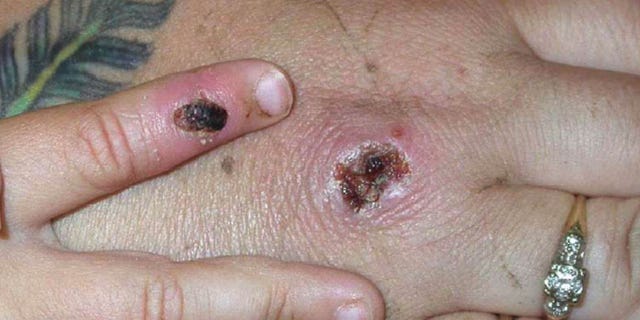What to do if you get Monkeypox: Symptoms, vaccinations, and treatments
Monkeypox: What you need to know
Johns Hopkins Center for Health Security senior scholar says what people should do if they contract the virus on ‘Special Report.’
NEWYou can now listen to Fox News articles!
Over the last few months, the Monkeypox disease has spread across the world prompting government health agencies and hospitals to fear the worse as the world emerges from the Covid-19 pandemic.
Monkeypox is a rare infectious disease in the same virus family as smallpox and can be transmitted to humans and animals. The disease was first discovered in 1958 when two African colony monkeys began to develop pox-like symptoms. Despite its namesake, the exact source of this disease is not known, and various non-human primates may infect people with the virus.
The virus is typically found in tropical environments in central and West Africa where the animals who carry the disease live. The 2022 global outbreak has been linked to the resurgence of international travel to countries where the disease is present.
US MONKEYPOX: WHERE ARE THE CASES NOW?
What are the symptoms?
Monkeypox symptoms in humans include fever, swollen lymph nodes, and a blister rash that typically dries out the skin, according to the World Health Organization. Individuals may experience mild symptoms but the ability to carry the virus without symptoms is not known at this time. These symptoms typically last between 2 and 4 weeks from the initial exposure.

A Monkeypox lesion on a woman’s hand.
(CDC/Getty Images)
The WHO notes that signs of a rash usually start within 24 to 72 hours after the start of the fever and lesions may have filled with clear or yellowish fluid. The rash typically is concentrated on the face, palms, and soles of the feet but may also spread to the genitals, eyes, and mouth.
Does a vaccine exist for Monkeypox?
Several vaccines used to treat smallpox add protection against Monkeypox and those who have been vaccinated against smallpox may have some protection as well, according to the WHO. Imvanaex is a vaccine developed for smallpox and was approved in 2019 to help prevent monkeypox, but the drug is not accessible to most of the public.
PEDIATRIC HEPATITIS OUTBREAK CASES ARE NOT ABOVE PRE-COVID-19 PANDEMIC LEVELS: CDC
The WHO notes that the vaccines used to treat smallpox in 1980 are not available because it became the first disease to be fully eradicated. Health agencies are working to make newer smallpox vaccines more widely available to the public.
What are the treatments?
Most symptoms of Monkeypox typically resolve by themselves without the need for extensive treatment or medical care. However, the WHO and CDC recommend you avoid scratching or touching sores on the mouth or eyes.
In severe cases, the WHO recommends the use of vaccinia immune globulin (VIG), an antiviral made to treat smallpox that was approved for the treatment of Monkeypox back in January. Patients should also stay hydrated and eat food to maintain their nutritional status.
Monkeypox cases may be more severe in children, pregnant or individuals who have compromised immune systems.
CLICK HERE TO GET THE FOX NEWS APP
How many cases?
Since the start of the outbreak in 2022, confirmed cases of Monkeypox across the world totals to 4,106 confirmed cases in 47 different countries as of June 23, according to data compiled by the CDC. Moreover, the number of cases in the US stands at 173 cases in more than 20 states.
Read More: What to do if you get Monkeypox: Symptoms, vaccinations, and treatments

